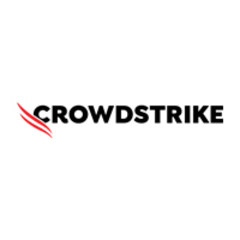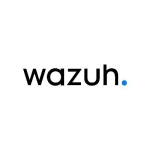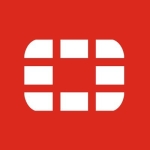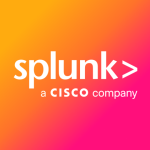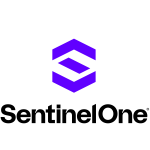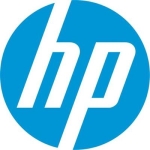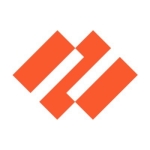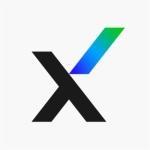What is our primary use case?
It gives an overview and insights into my AD accounts. It shows if any identity, like an AD user, is compromised, has a weak password, or is logging in from an unusual system. Any anomalies.
What is most valuable?
I like the insights and detailed view of my AD structure. How protected it is, or is there any loophole or an area that needs more protection.
Another feature I like is that it gives insights into all my domain controllers and ADCs. The configuration is also really easy.
The real-time monitoring feature is good. For example, a user account is hacked. It alerts me that it's been hacked and prompts me to look into it or have the user change their password. I can then log in to my AD, change the password, or notify the user that their account has been compromised and ask them to change their password.
AI capabilities of CrowdStrike are also good.
When I use Identity Protection, I want the full stack, like going for XDR. If anything happens, like a laptop being compromised using a password, it gives me the entire attack flow. For example, the attack came from a particular user, like an IT admin. If their identity is hacked and they log into multiple systems, and those systems are affected, we can see those details and provide good support or recovery for customers and partners.
What needs improvement?
I'm concerned about the recent issue in July 2024. It involved a faulty content configuration update. What if another update causes the same problem again?
For how long have I used the solution?
I have been using it for two years.
What do I think about the stability of the solution?
Stability, I would rate it as a seven out of ten. There are a few instances where our customers have complained about the digital signatures it uses. Sometimes, even if you create a policy, it still tends to block it. A few applications get flagged as malicious even though the customer trusts them. Even if you create an exception rule, it might still block it after a few weeks. Also, there's the recent issue we faced with CrowdStrike and Windows. So, based on that, I'd give it a seven out of ten.
There is room for improvement. They need to conduct more thorough R&D before releasing updates. I think they didn't do that this time, but it was just a one-time issue. However, what if it happens again? That's a concern.
What do I think about the scalability of the solution?
Scalability-wise, I would give it a ten out of ten. It's simple because it's a SaaS solution. For example, this month, I have 50 users. Next month, I have 50 additional users. I just need to buy more licenses and add those systems to CrowdStrike. If I need to put them in certain groups with specific policies, that's easy too.
We work with all types of businesses, including small, medium, and enterprise businesses. Scalability is simple. I don't even need to install it on my laptop. One more good thing is that it offers an XDR view where I can add other components, like the email security solution Proofpoint. I can integrate it, so I'll get my emails and everything will be in a single pane of glass.
How are customer service and support?
We have a Technical Account Manager (TAM). We can directly call them and raise a ticket. Initially, it was a six or even a five because we had to send an email, and it would take three to four days for them to reply. Now, with the TAM, we can get issues resolved faster.
How would you rate customer service and support?
Which solution did I use previously and why did I switch?
I have experience with CrowdStrike, apart from their Cloud Security offering, which is on GCP. I've worked with CrowdStrike Identity Protection, Device Control, Device Control, EDR, XDR - basically everything except their cloud solution.
How was the initial setup?
The initial setup is straightforward. I don't need to install an agent in my AD, and I can get alerts from my read-only domain controller, which is also good.
I would rate my experience with the initial setup a ten out of ten, with ten being easy and one being difficult.
It's not required to deploy on-premises. It's a SaaS solution. I just need to download the agent and install it on each of my devices, whether they're VMs or my laptop.
One more good thing is that I don't need to be in my office network for it to keep protecting me. I can take the system home, and it will still be protected.
The deployment itself takes about a day to install everything if it's user-based. But for CrowdStrike to learn what to block and what not to block in your specific environment, it will take easily about two weeks. There will be some applications that it might consider a threat because it's a next-gen AV that uses AI.
So, some applications the customer uses might be flagged. I can whitelist them or create a policy to allow them. That's also a very good feature of CrowdStrike.
So, for the initial setup takes two weeks. For it to get to know your environment and work smoothly, just to install agents and set up the dashboard, policies, and all that, it takes about one day.
It offers seamless integration with the existing security infrastructure. We haven't faced any challenges because our customers use CrowdStrike only for endpoint and server security. They haven't gone to the XDR level yet. However, many other OEMs I've spoken to, like Zerto, have said that the CrowdStrike and Zerto integration is very seamless. So, if anything happens on my server end, I'll know when it happened and what the issue is from CrowdStrike. Or, for example a ransomware attack happens, I can restore from my Zerto application.
What was our ROI?
The benefit I've seen is their backend, which powers the EDR, XDR, and NGAV. It's really good because it can detect anything due to the wide range of customers they have.
For example, one customer has a vulnerability because of a zero-day attack. All the other customers will benefit because it propagates to the cloud and analyzes if other customers are on the same version of the drivers or any other Windows patch. If they are, it will tell us that there's an issue and provide remediation steps. Many of our customers find this very helpful. It's called the CrowdStrike community.
What's my experience with pricing, setup cost, and licensing?
I would rate it a seven out of ten, where one is cheap, and ten is expensive because it's a bit on the costlier side. Compared to Symantec or Trend Micro, CrowdStrike is more expensive.
What other advice do I have?
Overall, I would rate the product an eight out of ten because of one recent issue that happened.
I'm concerned about the recent issue that happened. What if another update causes the same problem again? Is it really as good as it seems? Even our customers have given very good feedback, they get more insights into what's happening, what they should do, and what remediation steps to take. So, in that way, it's very good.
I would recommend it, especially if you're going for endpoint security. I'd definitely recommend CrowdStrike first because it's more mature than SentinelOne and other EDR solutions in the APAC region.
Disclosure: My company has a business relationship with this vendor other than being a customer. Partner

